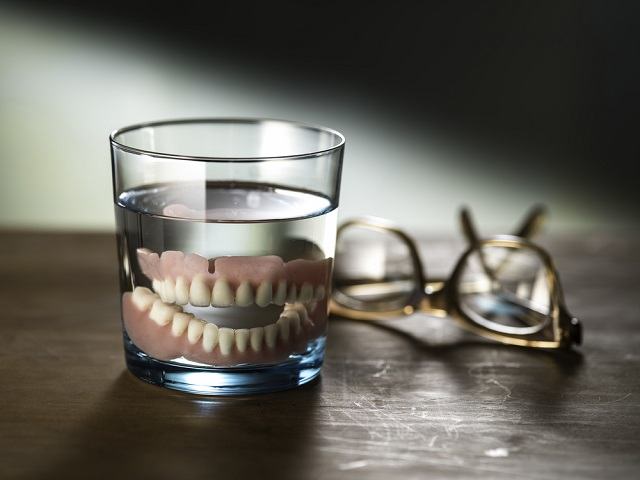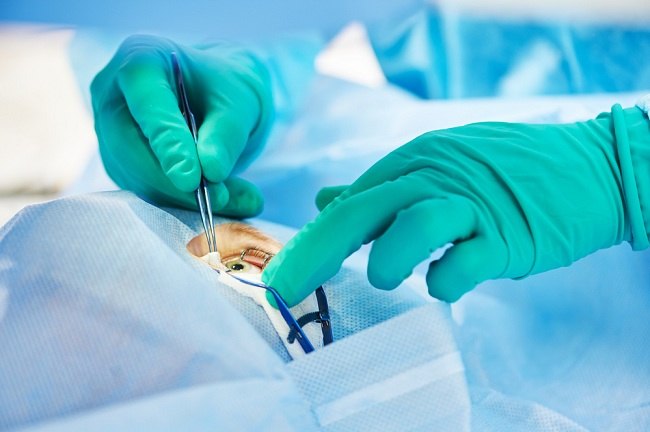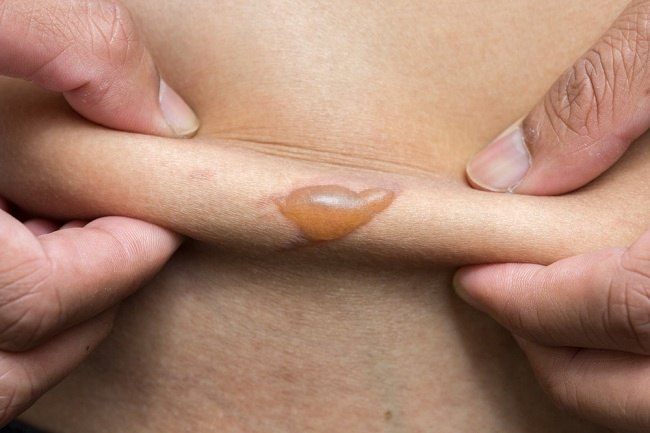Glycolic acid is an active ingredient that functions to accelerate the turnover of dead skin cells, so that it can soften and give a brightening effect to the skin. Glycolic acid is often used in skin care products. This material available in the form of creams and lotions with levels of 10%, 30%, or above 70%.
Glycolic acid or glycolic acid is a type of acid alpha-hydroxy acid (AHA) which works by removing dead skin cells on the outermost layer of skin. This way of working will stimulate the growth of new skin cells, thus making the skin smoother and brighter.

Glycolic acid can also stimulate the production of collagen which makes the skin more elastic. In addition, glycolic acid also has the effect of shrinking pores so as to keep skin pores clean. This will help prevent blackheads and pimples from forming.
The use of glycolic acid with levels above 10% should only be done by a dermatologist. Meanwhile, glycolic acid products with levels of less than 10% can be found in various beauty products that can be used independently at home.
Glycolic Acid Trademark: Glycore, Interquin, XP Peeling Cream
What is Glycolic Acid
| group | Over-the-counter and prescription drugs |
| Category | Skin care products |
| Benefit | Removes the outermost skin cells (peeling) |
| Used by | Mature |
| Glycolic acid for pregnant and lactating women | Category N: Not yet known Glycolic acid may not be absorbed into breast milk, so in low levels, this drug is relatively safe for use by nursing mothers. Even so, first consult with your doctor before using this drug. |
| Drug form | Creams, lotions 10%, 30%, or above 70% |
Precautions Before Using Glycolic Acid
There are several things that must be considered before using glycolic acid, including:
- Do not use glycolic acid if you are allergic to this ingredient. Consult a doctor regarding skin care products that are safe for you.
- Do not use glycolic acid on areas of the skin that are experiencing infections, severe acne, irritation, wounds, or sunburn.
- Do not smoke and avoid exposure to secondhand smoke while using glycolic acid.
- Consult your doctor first if you plan to use glycolic acid while you are pregnant, nursing, or planning a pregnancy.
- Do not apply this medicine on any part of the body that has the potential to come into contact with the baby's mouth or skin.
- Glycolic acid is for skin use only, be careful when using this product, do not ingest it or get it in your eyes. Immediately flush with running water if this medicine gets in the eyes.
- Talk to your doctor if you plan to take any medications, supplements, or herbal products while taking glycolic acid.
- Do not use glycolic acid while you are on treatment with an exfoliating effect, such as when using topical tretinoin.
- Use a sunscreen with an SPF of at least 30 while using glycolic acid. Glycolic acid can make your skin more sensitive to sunlight.
- See your doctor immediately if you have an allergic reaction or overdose after using glycolic acid.
Dosage and Instructions for Use of Glycolic Acid
To be safe, consult with your doctor about the dosage of glycolic acid cream or lotion according to the condition or skin problem you are experiencing. This is to prevent irritation after the use of glycolic acid cream.
For glycolic acid in over-the-counter skin care products, follow the directions for use on the packaging. Apply a thin layer of cream or lotion evenly on the skin you want to treat and leave it on for a few minutes. Pay attention to the reaction of the skin after applying the glycoic acid product, if no redness or signs of irritation appear, continue use.
It is recommended not to directly use glycolic acid every day. Do it 3 times a week for 1-2 weeks first. If irritation does not appear, continue to use 4 times a week for 1-2 weeks.
How to Use Glycolic Acid Correctly
Use products that contain glycolic acid according to the directions on the package or as directed by your doctor. Do not increase the dose or extend the duration of use of the drug.
Before using glycolic acid cream, clean the area of skin to be treated with a facial cleanser, then rinse with water. After that, use toner if needed. Take an adequate amount of glycolic acid cream using your fingertips, then apply the cream evenly to the desired area of the skin.
Use a sunscreen with an SPF of 30 or more while on treatment with glycolic acid cream to avoid this sunburn or irritation. Use a moisturizer and avoid using products that have an exfoliating or exfoliating effect while using glycolic acid.
Store glycolic acid in a room at room temperature. Do not store it in a damp place, keep it away from direct sunlight. Keep glycolic acid out of reach of children.
Glycolic Acid Interactions with Other Drugs
Taking glycolic acid with tretinoin, adapalene, or isotretinoin can increase the risk of side effects. To be on the safe side, discuss with your doctor if you plan to use other treatment products or want to take medications, supplements, or herbal products while on treatment with glycolic acid.
Side Effects and Dangers of Glycolic Acid
Some of the possible side effects after using glycolic acid are:
- skin irritation
- Skin becomes red
- Skin feels hot and burning
- Swelling on the skin
- Irritation to the eyes if the drug gets into the eyes
Check with your doctor if the side effects mentioned above do not subside or are getting worse. See your doctor immediately if you have an allergic reaction or you develop scars, blisters, or skin discoloration after using glycolic acid.









